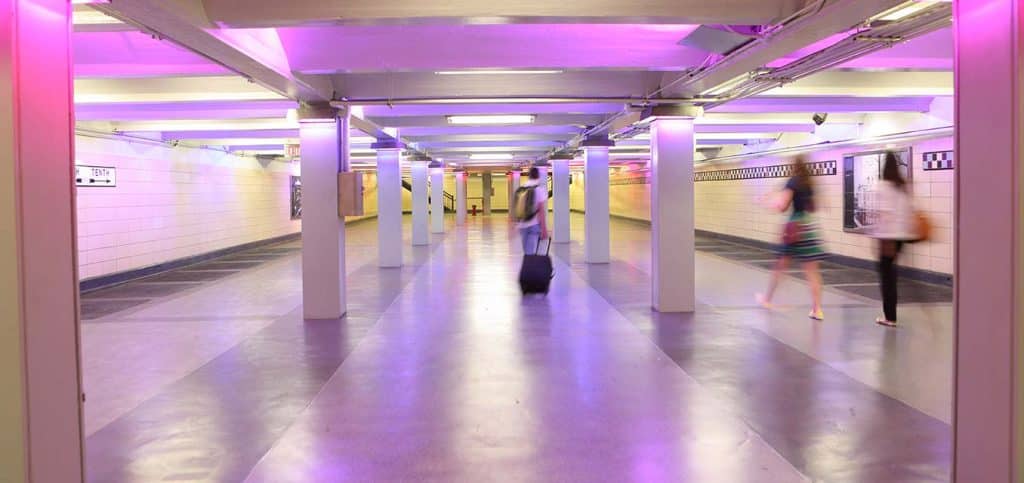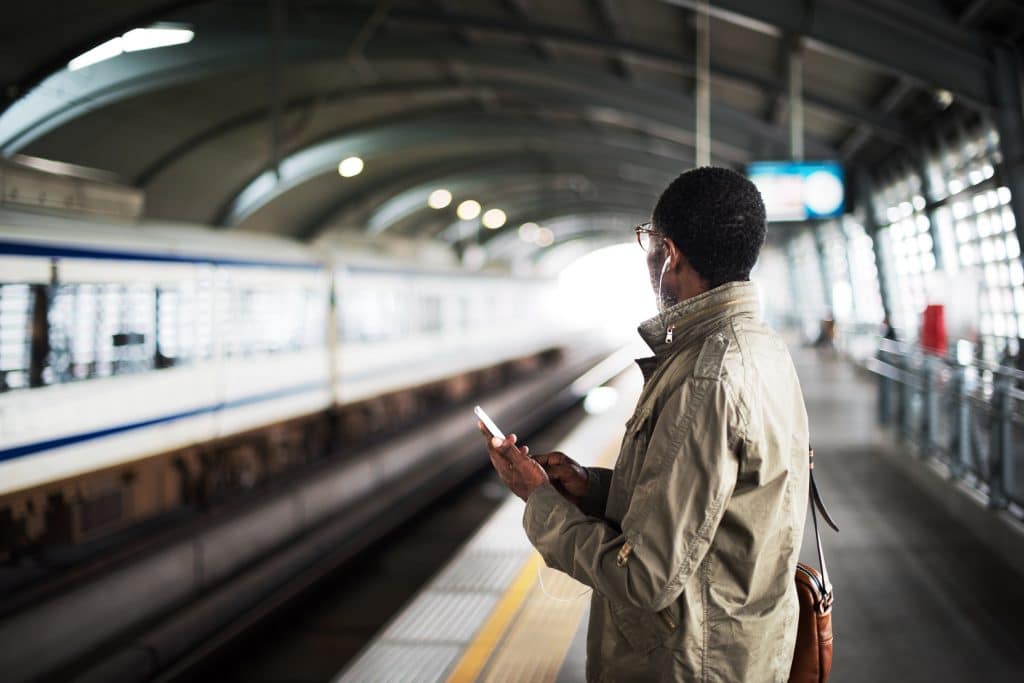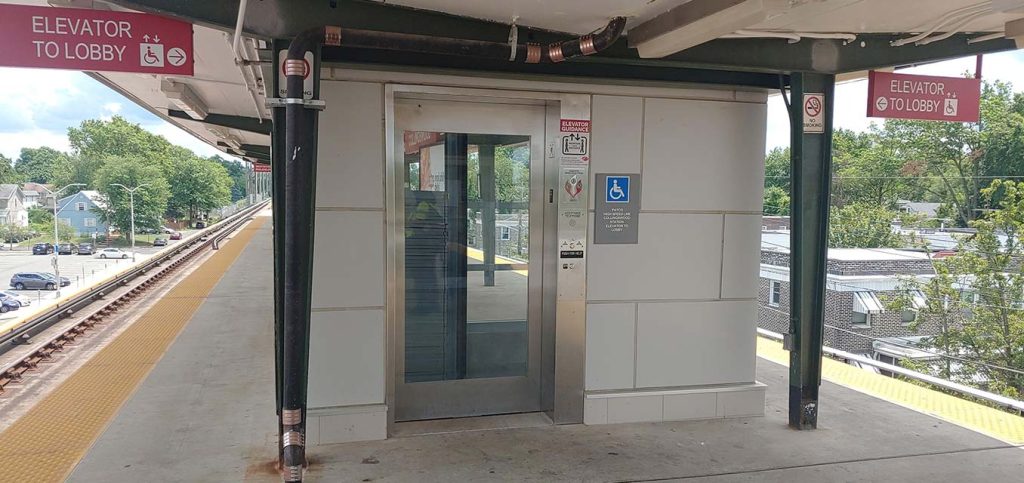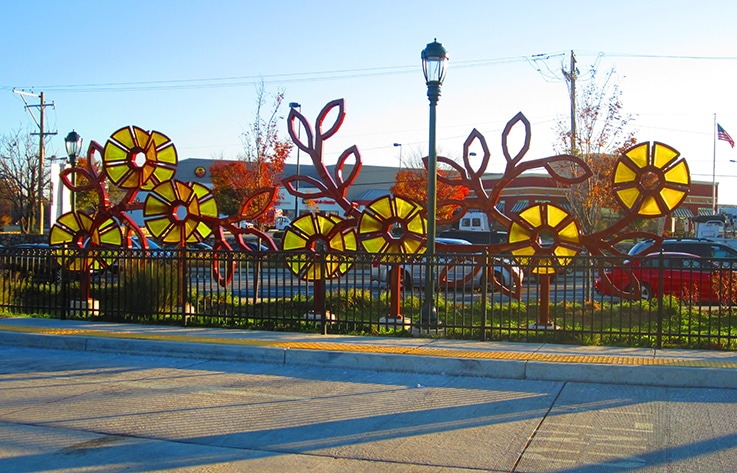Transit Agencies Prioritize Facilities Upgrades for Improved Passenger Experience
As transit agencies anticipate and experience upticks in ridership, they have started to implement enhancements to make passengers’ commutes safer and easier – before they step onto their trains or buses. Many of these enhancements involve upgrades to rail and bus stations, as agencies recognize the important role facilities play in commuters’ overall experience.
Lighting
Lighting is an important component in making transit passengers feel safe. Agencies are improving lighting in bus or rail stations’ exteriors, interiors, pedestrian corridors and platforms by installing more lighting, and ensuring that the new lighting is easy to maintain, energy-efficient and meets both current and evolving guidelines for sustainability. Although it can be challenging in many locations, authorities are also finding ways to incorporate natural light into their stations when possible.

An interior view of lighting improvements at PATCO 9th & 10th Street Concourses
Appearance
Passengers cite a facility’s appearance and cleanliness as primary factors in how they feel about their commutes. As a result, agencies are stepping up their strategic and routine maintenance programs to help ensure that walls, floors and other surfaces in their facilities are clean, bright, well painted and well maintained.
Communication
Passengers like being able to easily navigate through gates, corridors and platforms to get to their busses and trains. They also like to be kept informed of schedule changes or delays, so agencies are installing systems and tools to accomplish both. New, clearer public-address systems are being supplemented with new, traditional, and ADA-compliant digital signage that provides strategically placed navigation aids and near-instantaneous schedule information. In addition, closed-circuit-television cameras and other security equipment are being installed to enhance security and enable two-way communication in the event of emergencies.

Passengers like to be kept informed of schedule changes or delays.
Accessibility
Transit agencies are under increasing pressure to make their services accessible to all users, regardless of age or ability, and are implementing a range of ADA-compliant improvements. New elevators are supplementing safety improvements to ramps, stairs and escalators. Detectible pathways, better PA systems, and audible navigation aids at gates, in corridors and on platforms are helping those with vision impairments find their way. Signage is getting brighter and easier to read in order to help passengers get where they need to go. In addition, agencies are employing more “ambassadors” at stations to help passengers navigate the fare system, gates and other areas.

Aesthetics
Research shows that improving a facility’s aesthetics also can impact passengers’ experience. Many agencies have teamed with local artists to punctuate their facilities’ exterior and interior walls and other surfaces with unique paintings, murals, frescoes and other permanent and semi-permanent installations that highlight local history, architecture, notable leaders, or the character of the surrounding community. Sound and music are also being used to enhance the passenger experience. In a long underground pedestrian corridor that connects commuters with local and regional transit lines in Philadelphia, for example, the local transit agency piped music into the tunnel, and passengers reported that the improvement makes the walk feel safer and more pleasant.

“Improving a facility’s aesthetics also can impact passengers’ experience.”
Connectivity
Passengers want uninterrupted connectivity to their phones, laptops and other devices while traveling, and agencies are adding both the infrastructure and technology necessary to maintain connectivity in spots that were previously wireless “dead zones,” including underground (even in tunnels!), and on platforms and vehicles. Such connectivity, passengers say, boosts convenience and productivity, and makes them feel safer.
Feedback and Results
Transit agencies are making the most of technology and social media to regularly elicit passengers’ opinions, gauge their short- and long-term needs, measure interest in new capital programs, and communicate overall goals and day-to-day considerations, such as schedule or fare changes.
Today, passengers can provide immediate feedback through a variety of traditional and new media, including websites, email, text messages, around-the-clock hotlines and helplines, and social media platforms such as Facebook and Twitter. That feedback is incredibly valuable as agencies plan and budget for future improvements and State of Good Repair (SOGR) work that will continue making bus and rail transit safer, more reliable, more customer-centric and, ultimately, more popular and more well-used than ever.


